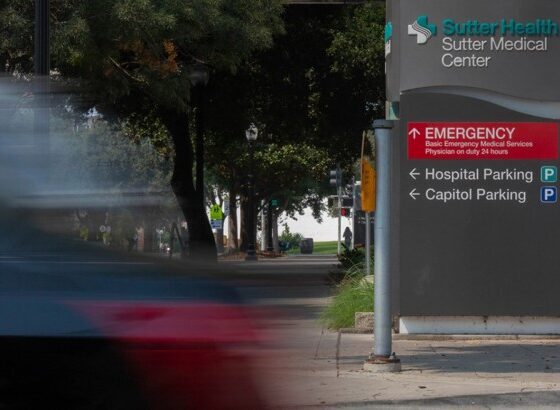By PAULINE W. CHEN, M.D.
Interesting piece about the unintended cost and consequences of hospital re-admissions. Spectacular advances in medical science have led to a growing population of patients who are “hospital-dependent” adding great cost to the healthcare system.
“He’s back?” my colleague asked, eyes widening as she passed the patient’s room. “He’s in the hospital again?”
Slender, pale and in his late 60s, the man had first been admitted nearly a year earlier with pressure in his chest so severe he had trouble breathing. When his heart stopped, doctors and nurses revived him by injecting the latest life-saving medicines into his veins and applying the newest electrical defibrillator paddles to his chest.
Within minutes, the cardiology team arrived, but when the blockage in the arteries of his heart proved too extensive for even their state-of-the-art techniques and equipment, they handed him off to the waiting surgeons. The surgeons, in turn, cooled down his heart until it stopped beating, sewed in bypass conduits with threads finer than human hairs, restarted the heart with a few well-placed jolts of electricity and then transferred the patient to the cutting-edge intensive care unit to recover.
The man survived. Sort of.
Weakened by this string of emergencies, he required a breathing machine for several days. When excess fluid in his lungs caused shortness of breath, he needed intravenous diuretics. When his heart began beating erratically, he was obliged to take a finely tuned cocktail of heart medications. And when his chest wound became infected, he had to return to the operating room.
Finally, after nearly two months in the hospital, he was discharged to a skilled nursing center. But then a urinary tract infection made him dizzy and confused, and he went right back to the hospital, beginning a cycle of discharge and re-admittance that would persist for almost a year.
To many of us who had cared for the man, it seemed as if he had spent more days in the hospital than out.
“What kind of life is that?” my colleague asked as we stood in the hallway and watched the man’s wife help him once again put on his hospital gown and pack away his street clothes. “You’ve got to wonder,” she whispered, “did we really do him a favor when we ‘saved’ him?”
I was reminded of the frail man and the many patients like him whom I have known when I read a recent Perspective piece in The New England Journal of Medicine titled “The Hospital-Dependent Patient.”
Over the last 30 years, American hospitals have become a showcase of medical progress, saving lives that not long ago would have been lost.
“Rapid response teams,” drilled in precision teamwork and the latest techniques of critical care, have become commonplace. Cardiac and respiratory monitors, once found only in intensive care units, are now standard equipment on most wards and even in many patient rooms. CAT scanners and M.R.I. machines, once rare, have become de rigueur, with some hospitals boasting duplicates and even triplicates.
But up to one-fifth of patients treated with these new medical advances and then deemed well enough to leave the hospital end up being re-admitted within 30 days of their discharge, at considerable cost. Insurers and third-party payers have begun penalizing health care systems for these quick re-admissions; and hospitals, in response, have begun significant efforts to improve the transition from hospital to home, creating clinics that remain open beyond usual working hours and marshaling teams of care coordinators, post-discharge pharmacists and “care transition coaches.”
The problem persists, though, because our spectacular advances in medical science have led to a growing population of patients who are “hospital-dependent,” according to the authors of the Perspectives article.
Hospital-dependent patients are those who, a generation ago, were doomed to die. Now they are being saved. But they are not like the so-called hot spotters, a group of patients more commonly associated with frequent re-admissions who return to the hospital because of inadequate follow-up care, failure to take prescriptions correctly or difficult socioeconomic circumstances. Instead, hospital-dependent patients come back because they are so fragile, their grasp on health so tenuous, that they easily “decompensate,” or deteriorate under stress, when not in the hospital.
Medical advances can snatch them from the clutches of death, but not necessarily free them from dependence on near-constant high-tech monitoring and treatments.
“They are like a house of cards,” said Dr. David B. Reuben, lead author of the article and chief of the division of geriatrics at the Geffen School of Medicine at the University of California, Los Angeles. “When one thing goes wrong, they collapse.”
Not surprisingly, hospital-dependent patients feel more secure and are happier in the hospital than at home. While clinicians and even family members may judge theirs a diminished existence, these patients find their quality of life acceptable, relishing their time with friends and family or engaged in passive hobbies like watching sports or reading the newspaper, albeit in the hospital.
Over time, however, their recurring presence can result in conflicted feelings among those who were responsible for saving them in the first place. Some clinicians even begin to resent their obligation to continue administering resource-intensive care. “Physicians are socialized to cure patients, then move on,” Dr. Reuben observed. “They want to treat patients, not adopt them.”
Dr. Reuben and his co-author offer potential solutions, such as specialized wards or facilities that would be more intensive than skilled nursing homes yet less costly than a hospital. But they are quick to add that more research must also be done. Their concept of “hospital-dependency” is a new one, so no research is available to help identify patients at risk of becoming hospital-dependent, estimate the percentage of early re-admissions they are responsible for or calculate the costs they incur.
Even without studies, it’s clear that the numbers of these patients are increasing. With every triumphant medical advance, there are patients who are cured but who remain too fragile to live beyond the immediate reach of the technology that saved them. Until we begin making different decisions regarding how we allocate our resources, their presence will be a constant reminder of which medical research and health care we consider worthy and which we do not.
You might also like


